|
|
INTRODUCTION
|
|
"We are excited to release our second newsletter and would like to thank all of the new subscribers! You will continue to receive our latest news and updates once every month. Since the release of our first newsletter, we have exhibited the Macropod at natural history conferences in Pennsylvania and Massachusetts. In this issue, you can read about our experiences at these events, as well as browse through many of the images that we captured for the attendees (I hope you like insects and fossils!). Also, we are excited to announce the newest section to our website, where we provide high schools with the opportunity to receive their own Macropod, free of cost! We hope that you enjoy this issue of the Macroscopic Solutions Newsletter!"
- Macroscopic Solutions Co-founder, Dan Saftner
NOTICE!
Our address is changing on May 1 to :
121 Woodland Rd. Coventry CT 06238 |
Happy Belated Earth Day!
Spring has arrived! The animals are returning, the flowers are blossoming and Macroscopic Solutions is busy doing what they do best - imaging nature’s art for science! |
|
RECENT IMAGES |
Mark Smith has imaged a red-eared slider, which has been returning to his property on occasion. You’ll never guess what the eye of an invasive turtle looks like up close! |
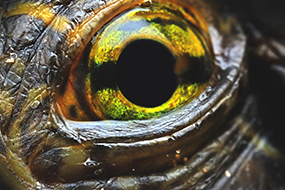 Eye of a Painted Turtle Eye of a Painted Turtle
|
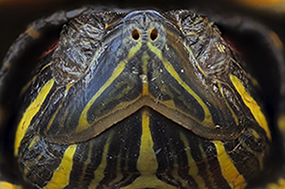 86 stacked images through the face of a Painted Turtle 86 stacked images through the face of a Painted Turtle
|
Dr. Chris Simon had images taken of her 9-month old 17-year periodical cicada in the genus Magicicada. This first instar nymph was collected at Sweet Briar College, Sweet Briar, Virginia by a biology lab class taught by Dr. Linda Fink, a collaborator of the Simon Lab, EEB, UCONN. The species is either M. septendecim, M. cassini, or M. septendecula; DNA techniques are being developed to allow identification. |
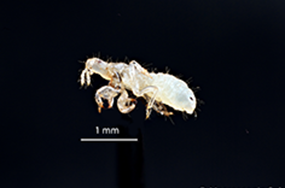 Periodical cicada: First Instar Periodical cicada: First Instar
|
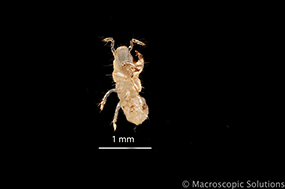 Periodical cicada: First Instar Periodical cicada: First Instar
|
 Spider wrapped in silk Spider wrapped in silk
|
It is common to see silk-wrapped insects, but less common to see a spider that has been wrapped by another. Spiders often wrap their prey while they are still alive, first injecting them with venom to limit mobility, and then wrapping them to prevent their escape. The spider may then save the prey for later consumption, eating the prey and silk to gain all possible energy. This sample was found by Dan Saftner in Beechview, Pennsylvania and was imaged with the Macropod. |
| |
EVENTS AND CONFERENCES
|
Upcoming Events
Joint Aquatic Sciences Meeting 2014
From May 18-23, you can find Macroscopic Solutions, along with thousands of aquatic scientists at the Joint Aquatic Sciences Meeting at the Oregon Convention Center in Portland, Oregon. The joint meeting brings together four leading aquatic scientific societies, including Society for Freshwater Science (SFS), Association for the Sciences of Limnology and Oceanography (ASLO), Phycological Society of America (PSA), and Society of Wetland Scientists (SWS).
Macroscopic Solutions will be exhibiting their newly developed, high resolution imaging device, the Macropod. If you will be in attendance, don’t forget to bring your favorite small-medium sized samples to have imaged!
Present this newsletter at the Macroscopic Solutions booth and receive a free high resolution image of your specimen! |
Past Events
The Northeast Natural History Conference 2014
What better way to learn and share new interdisciplinary natural history information than to attend the Northeast Natural History Conference? Proving its success, this year marked the 14th gathering of the conference. This year’s meeting, similar to the last, was held in Springfield, MA. Session topics ranged from saltwater ecology and invasive species, to New England flora patterns and amphibian conservation.
As always, Macroscopic Solutions was promoting the Macropod and encouraged all in attendance to bring by some specimens for imaging. This time around, the team got their hands on plenty of wasps, bees, beetles, snail shells, flowers, sand grains, and even some fruit (kindly provided by the hotel catering staff). View the NENHC gallery in its entirety here. |
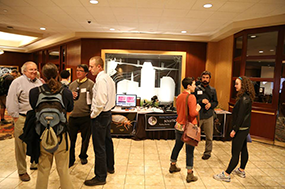 NENHC attendees in front of Macroscopic Solutions booth NENHC attendees in front of Macroscopic Solutions booth
|
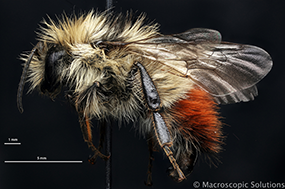 Lasioglossum versatum Lasioglossum versatum
|
|
2014 Geological Society of America Northeastern Section Meeting
This past March, Lancaster, PA was overrun with geologists attending the GSA Northeastern Section Meeting. An influential lineup of geoscientists gathered to discuss their research, oftentimes over a beer at the Marriot Bar.
Luckily, many of the attendees were carrying specimens with them that they hoped to have imaged with the Macropod. Among these samples were trilobites, a Herkimer diamond, foraminifera, a brachiopod holotype, jewelery, and of course, plenty of rocks and minerals. You can view all of these images here. |
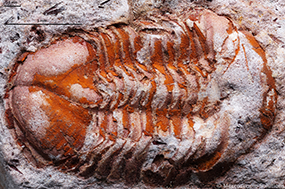 Trilobite collected in China Trilobite collected in China
|
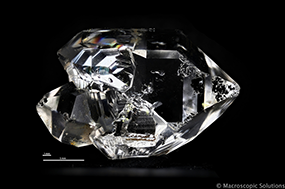 Herkimer Diamond Herkimer Diamond
|
COMMUNITY OUTREACH
|
|
Macropod For High Schools!
The Macropod has been profoundly significant for the scientific community because it provides an effective framework for digitizing, documenting and preserving lab and/or in-situ data. While this is important, we believe it is more important to let kids use and discover the Macropod’s potential for educational purposes. Kids are more likely to pursue sustainable careers in science and engineering if the material they are learning is easier to comprehend.

The Macropod is a powerful tool because it can easily render high-resolution 3D visuals of objects that are scientific in nature and in ways that defy obvious understanding. The Macropod aesthetically reveals details that are normally too small to know about or even see. When these details are elegantly exposed to kids, they are prompted to ask higher order questions that will help them understand the attributes and functions of the objects they are looking at. As a result, their curiosity has been reinstated and science is no longer intimidating to learn.
That’s why Macroscopic Solutions gives away one Macropod device for every ten they assemble to deserving high school applicants that have validated its use within the scientific curriculum. We believe students are more likely to pursue sustainable careers in science and engineering if the course material is easier to understand.
Applications are now open and we would like to have your school apply. Please visit our website to access the application, which will allow your students the chance to explore the world with the Macropod!
|
| |
|
|
|